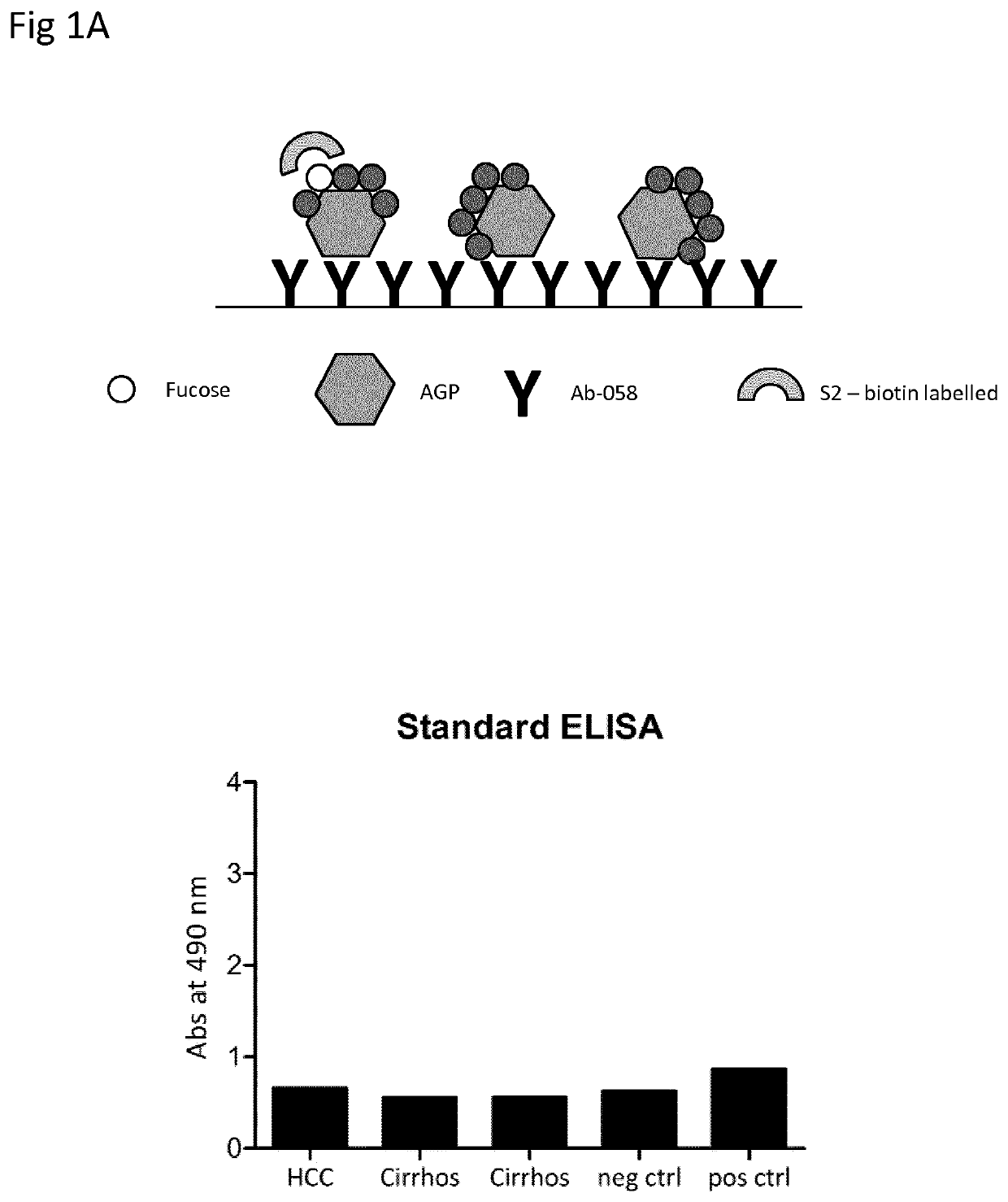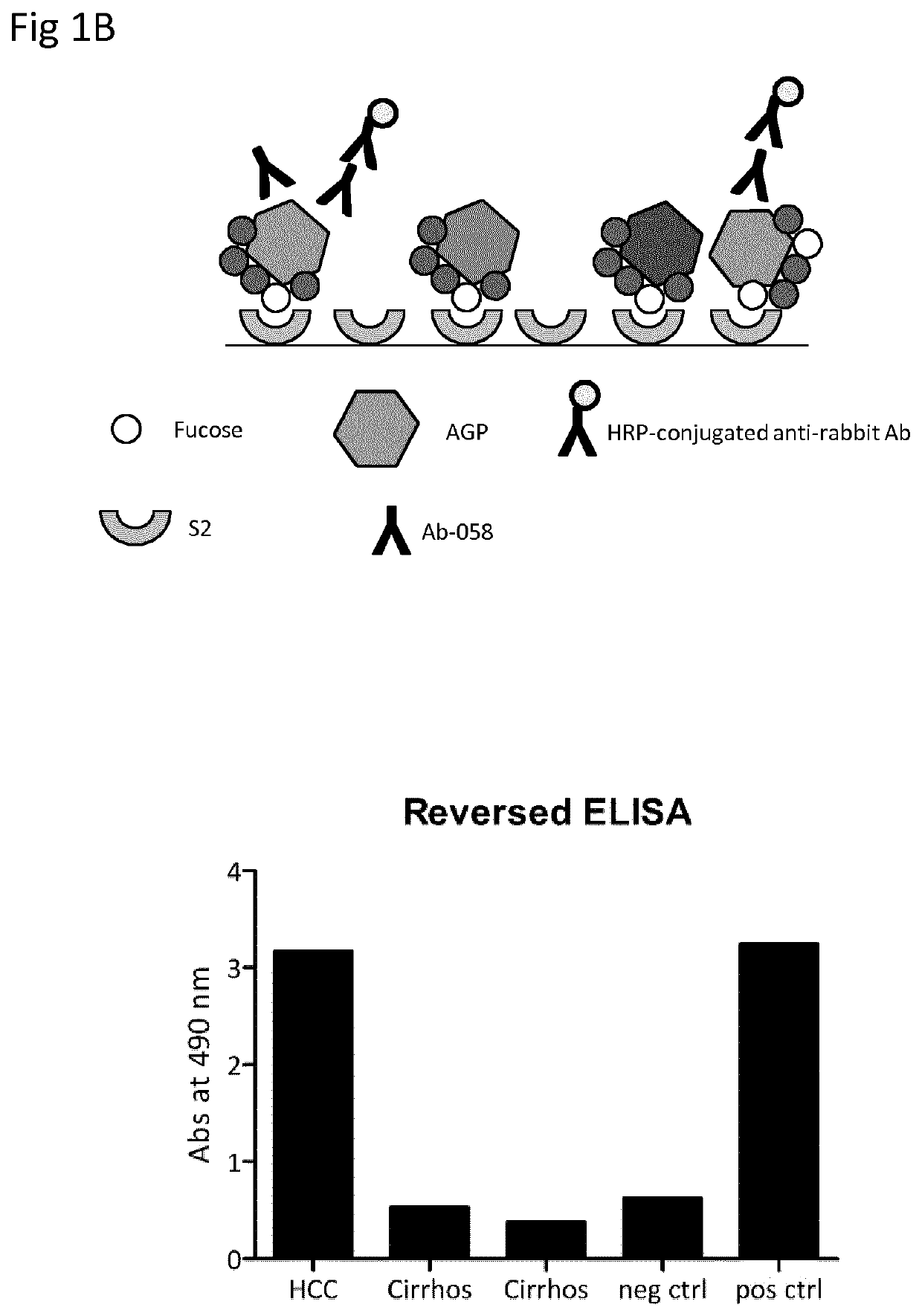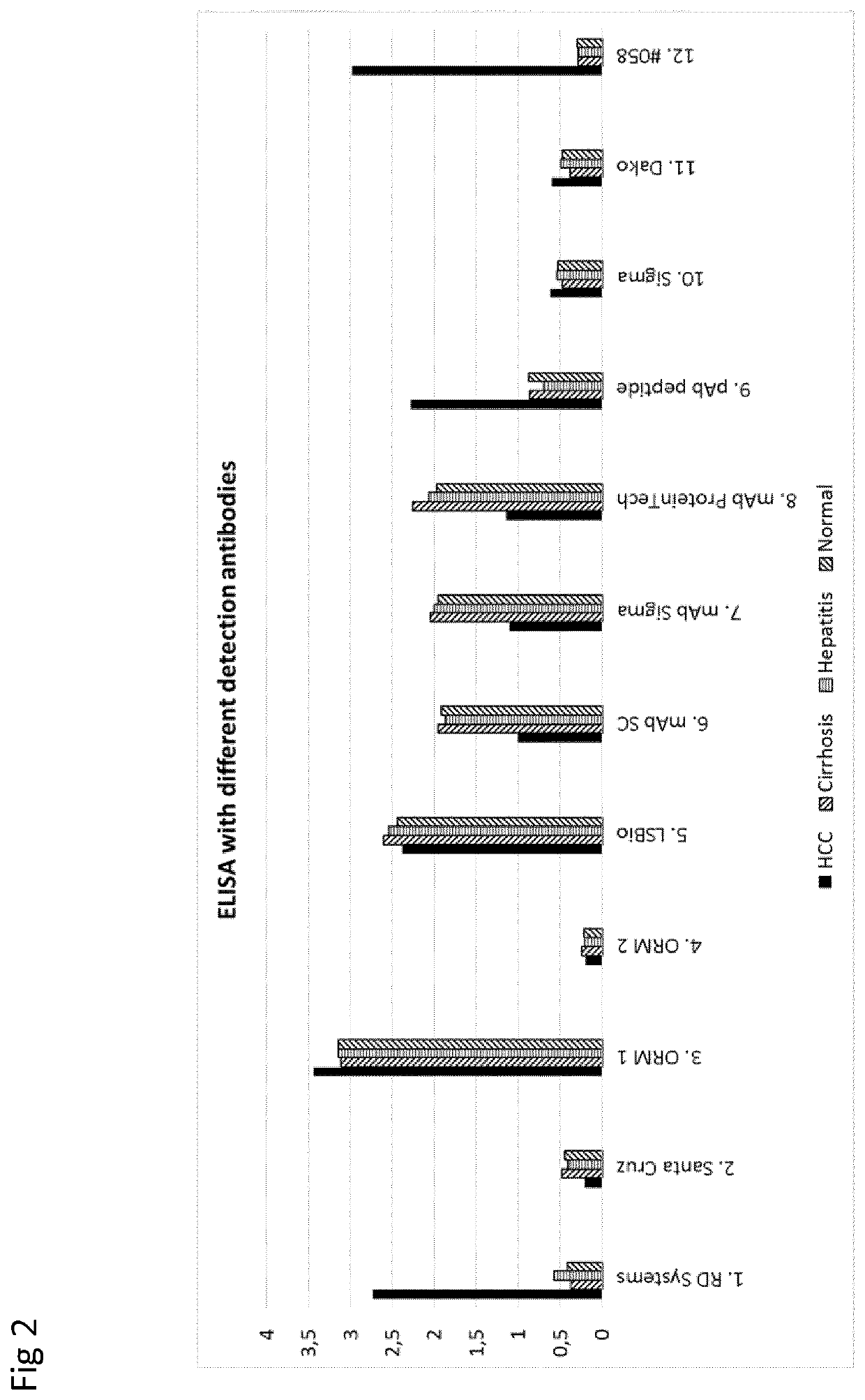Diagnostic Test for Hepatocellular Carcinoma
a hepatocellular carcinoma and diagnostic test technology, applied in the field of biomarkers and assays, can solve the problems of high cost, inability to detect tumors at an early stage, and insufficient diagnostic sensitivity and specificity of afp and dcp to detect h
- Summary
- Abstract
- Description
- Claims
- Application Information
AI Technical Summary
Benefits of technology
Problems solved by technology
Method used
Image
Examples
example 1
, Comparison of Standard ELISA and Reversed ELISA
[0084]Patient Samples
[0085]Plasma samples from one patient with HCC och two patients with cirrhosis were obtained from Karolinska University Hospital at Huddinge, Sweden. Normal control was a plasma pool from healthy blood donors. Positive control was dsAGP at a concentration of 2 μg / ml.
[0086]Production of Antibodies
[0087]Production of the polyclonal anti-human α1-acid glycoprotein antibody 058 was done by Agrisera antibodies (Vännäs, Sweden). Shortly, a synthetic peptide corresponding to the C-terminal amino acids 183 to 201 of human α1-acid glycoprotein was synthesized by Agrisera. The peptide was conjugated to KLH via its terminal cysteine using a maleimide crosslinker and rabbits were immunized four times with the KLH-conjugated peptide. Anti-AGP antibodies were purified from sera using the synthetic peptide coupled to 2 mL of UltraLink Iodoacteyl resin (Pierce, Rockford, Ill., USA).
[0088]Standard Lectin ELISA
[0089]Microtiter plat...
example 2
, Comparison of Detection Antibodies
[0094]Patient Samples
[0095]The analyses were performed on plasma samples from one patient with HCC, one patient with cirrhosis, one patient with hepatitis and a plasma pool from healthy blood donors (Normal).
[0096]Assay
[0097]The reversed S2-ELISA (as exemplified above) was used to compare commercial anti-AGP antibodies with Ab-058. The 058 antibody (sample 12 in FIG. 2) was compared to a number of commercial polyclonal or monoclonal anti-AGP antibody according to the list below.
[0098]Detection Antibodies
[0099]The following antibodies were used for detection.[0100]1. Human α1-acid Glycoprotein antibody (R&D Systems, cat no AF3694)[0101]Source: Polyclonal Goat IgG[0102]Immunogen: Human plasma derived α1-acid glycoprotein[0103]2. Human α1-acid Glycoprotein antibody (AGP-1 / 2, Santa Cruz Biotechnology, cat no sc-51018)[0104]Source: Polyclonal Goat IgG[0105]Immunogen: peptide mapping within an internal region of AGP-1 of human origin[0106]3. ORM 1 Polyc...
example 3
, Validation of Reversed S2-ELISA Using Purified AGP Samples
[0139]Purification of AGP
[0140]AGP was isolated from plasma samples using a two-step ion exchange chromatography method according to Asao et al.20. One mL plasma samples were applied to a HiTrap Desalting column (GE Healthcare, Uppsala, Sweden) equilibrated with 20 mM citrate-phosphate buffer, pH 4. The desalted peak was applied to a HiTrap DEAE column (GE Healthcare) equilibrated with 20 mM citrate-phosphate buffer, pH 4. Fractions containing AGP were eluted with 20 mM citrate-phosphate buffer, pH 7, containing 200 mM NaCl, pooled and applied on two joined HiTrap Desalting columns equilibrated with 20 mM citrate-phosphate buffer, pH 4. The desalted peak was applied to a HiTrap SP column (GE Healthcare) equilibrated with 20 mM citrate-phosphate buffer, pH 4, and AGP was eluted with 20 mM citrate-phosphate buffer, pH 4.8. The eluted fractions were dialyzed against water and lyophilized.
[0141]Production of Polyclonal Anti-Hum...
PUM
| Property | Measurement | Unit |
|---|---|---|
| pH | aaaaa | aaaaa |
| concentration | aaaaa | aaaaa |
| pH | aaaaa | aaaaa |
Abstract
Description
Claims
Application Information
 Login to View More
Login to View More - R&D
- Intellectual Property
- Life Sciences
- Materials
- Tech Scout
- Unparalleled Data Quality
- Higher Quality Content
- 60% Fewer Hallucinations
Browse by: Latest US Patents, China's latest patents, Technical Efficacy Thesaurus, Application Domain, Technology Topic, Popular Technical Reports.
© 2025 PatSnap. All rights reserved.Legal|Privacy policy|Modern Slavery Act Transparency Statement|Sitemap|About US| Contact US: help@patsnap.com



